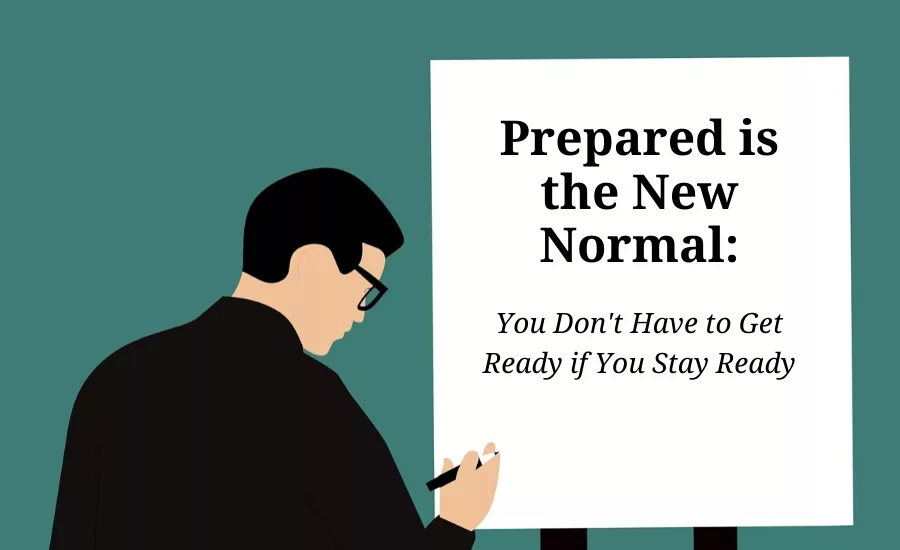Prepared is the New Normal: You Don't Have to Get Ready if You Stay Ready

Normalcy is defined as the state of being usual, typical, and or as expected. And recently, it's the last thing anyone reading this article has experienced.
Our lives are changing more quickly than ever before, weekly, daily, if not even by the hour. The leaders of both our national and local governments are making decisions, ordering residents to shelter in place, forcing businesses to close, adjust hours, and or change hours their employees report to work. All to help protect the masses and curb the spread of the highly infectious COVID-19 virus.
Emergency Service Industry Professionals preach the importance of having an Emergency Response Plan (ERP) in place for your household but also the consequences your business could yield for not having a proper well thought out Business Preparedness Program (BPP) in place. In the past few weeks, you have seen business owners and employees scrambling alike, not knowing what tomorrow brings, potentially due to not having a BPP.
Having a proper BPP will allow your business and or organization to be more diligent and nimble with how quickly you and your company can respond with the protocols and processes set in place. How quickly and effectively you respond will affect your outcomes today, tomorrow, and even if your business stays or goes out of business. This could also be a matter of life or death for your co-workers or employees. With disasters like hurricanes, tornados, earthquakes, epidemics becoming a common occurrence, it is our job as Emergency Service Professionals to help provide our clients with the proper instruction and or framework when building or implementing an ERP or BPP.
Step 1: Perform Disaster Risk Assessments
You don't need to know everything; you just need to know where to look. Any plan, worth its weight in salt, begins with assessing the chinks in one's armor. There are many factors we must first determine to know where our risk lies; some include:
- Fire Safety
- Medical Supplies
- Utility Dependency
- Building Security
- Cyber Security
- Employee Health
- And more…
Knowing where you are vulnerable can prevent catastrophic loss when an unfortunate event arises, and knowing is half the battle in being adequately prepared.
Step 2: Result-Based Planning
Now that you know, for example, your employees are of a certain age have predispositions to medical episodes, your facility can't function off the grid in critical times, and your network doesn't perform off-site back-ups, what do you do? After your risk assessment has shown areas of vulnerability, it's best to get with the person in your company who manages that domain to set up a standard operating procedure for each risk area.
Collectively these plans and procedures form your BPP. In the above example, it could be facilities managers setting up generators, HR working with local health care professionals to decide how to best take care of your employees and IT sending backups to the cloud. You know your company and employees best, so personalizing this plan starts with you.
Step 3: Implementation of BPP
These programs are only as good as their implementation. Perhaps most importantly, it is how you communicate them to your leadership, employees, and even customers. Use drills to make them second nature.
Step 4: Stress Test BPP
How do you know how they work? Stress test them. Make sure in times of actual duress that these procedures are reflexive. Use these drills to optimize and adjust them so they're useful when needed.
If you properly implement a BPP and ERP within your walls, you can prevent downtime and make sure your business functions don't fail you when you and your customers need them the most. We can't be sure when things will return to normal, but we can make sure we're ready for the problems that will arise until then.
Looking for a reprint of this article?
From high-res PDFs to custom plaques, order your copy today!







